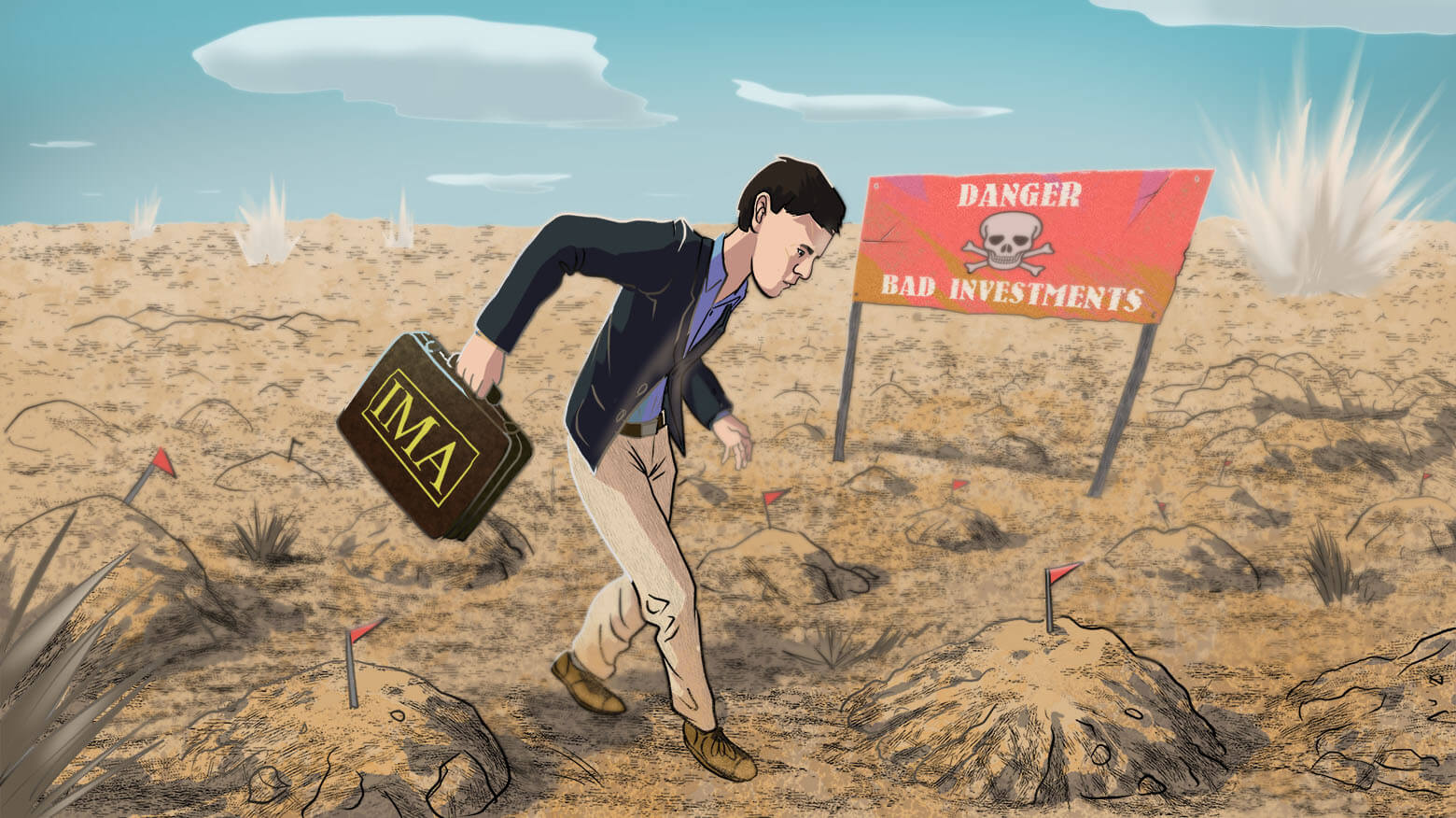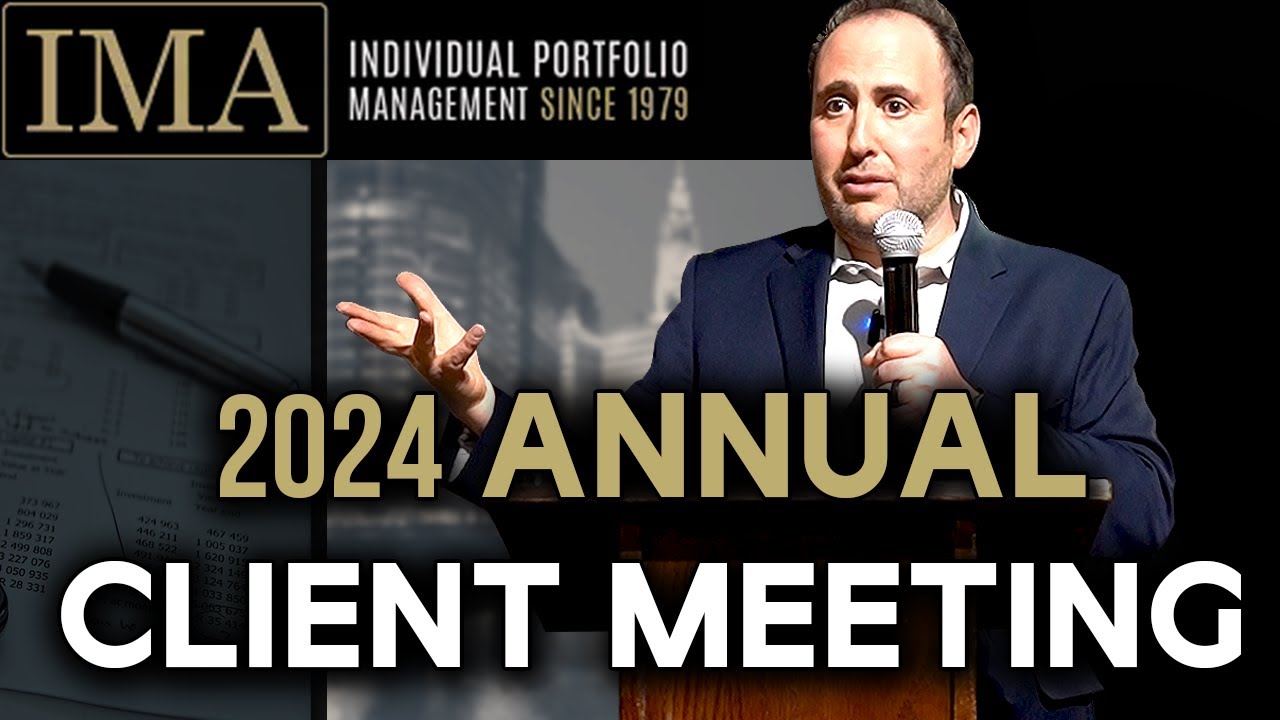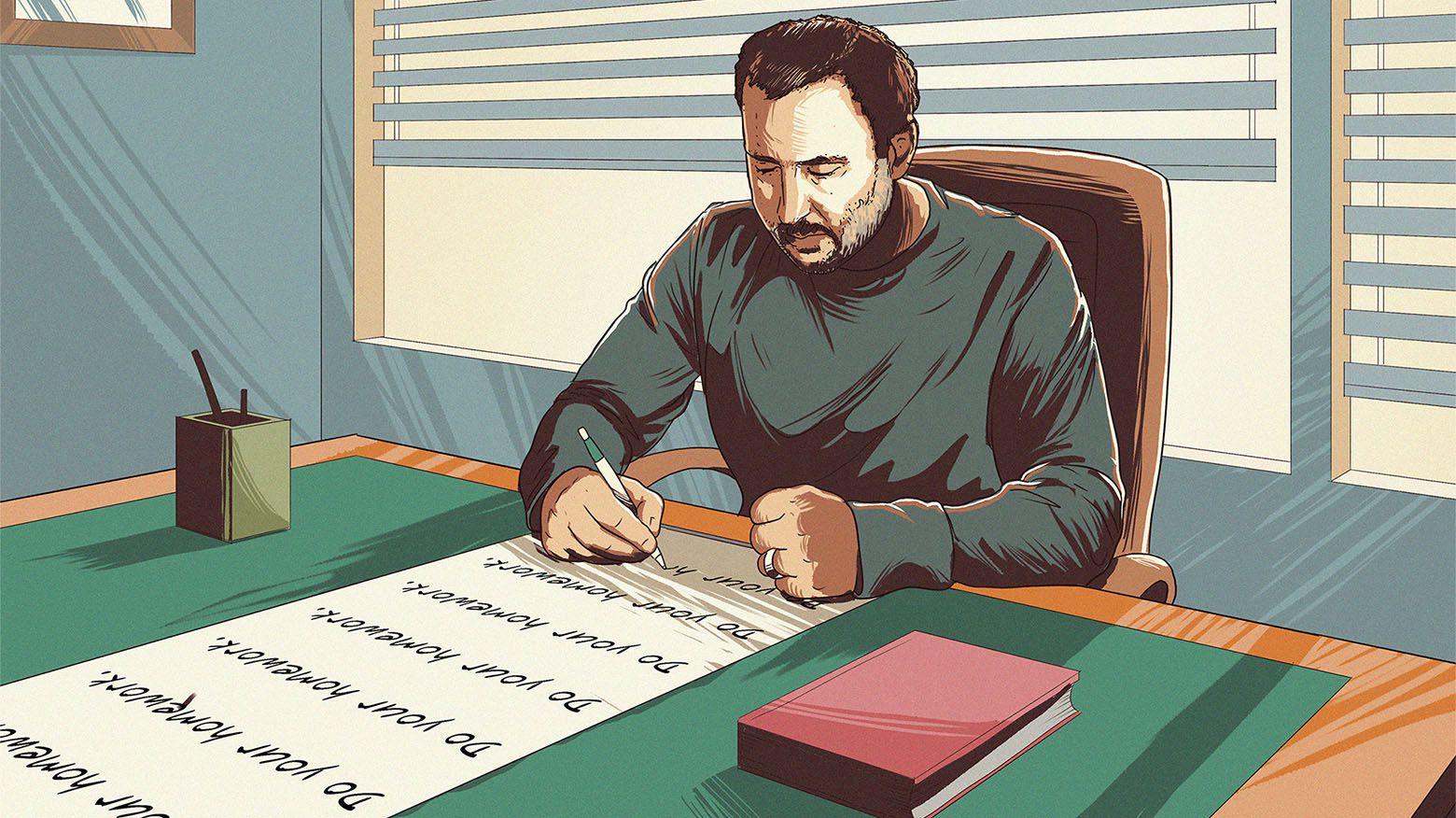Today, I am going to share Part 2 of the Spring Letter I wrote to IMA clients. You can read Part 1 here.
We have a fractional reserve banking system: For every dollar banks lend out, 85 cents comes from deposits and 15% from their own equity. The problem with deposits, as we saw in the SVB case, is that depositors are fickle – they can ask for their money back at any time.
If half of the country were to withdraw their deposits from their banks, we would not have a banking system or an economy. Banks lend out depositors’ money to others. There is an inherent imbalance of liquidity in the banking system that we never notice, which is absolutely fine as long as banks have proper reserves, do not experience losses on their loans or investments that exceed their reserves, and, most importantly, society believes in the continuity of the banking system as a whole.
Bank runs occur when depositors lose their confidence, show up at the bank, and ask for their money, depleting the bank’s reserves (equity) and forcing it into bankruptcy. At the beginning of the 20th century, bank runs were a common occurrence, leading to the establishment of the Federal Reserve in 1913. The Fed was created to act as a lender of last resort to help prevent bank runs from occurring.
In Part 1, I referred to the SVB failure as almost a traditional run on the bank, because SVB was functionally dead before the bank run occurred – prices of the bonds it held declined so much that its liabilities exceeded its assets. Unlike in a traditional bank run, most of its assets were not tied up in illiquid loans but in very liquid mortgage-backed securities and US government Treasuries.
I’ll preface what I am about to say next by admitting that I am a libertarian at heart. What makes this country great is that it allows people to take risks and to fail. Business failure is painful; people lose their jobs; investors lose their life savings. Capitalism without failure is heaven without hell. Failure fertilizes the ground and allows the growth of new companies, which benefits society.
Bailing out equity and bond investors introduces moral hazard; it changes investor behavior. It leads to an asymmetry of outcome – taking higher risk brings higher returns but the risk is socialized (shared) with people who are not going to reap the rewards. Bailouts create social tension. Eventually, bailouts introduce so much risk into the system that failures and bailouts become too costly for the society to bear, government creates draconian rules trying to prevent them in future, which in turn kills innovation and the formation of new businesses, and the result is a stagnating economy.
There is an argument that depositors whose deposits exceeded the FDIC limit of $250k per individual ($500k per couple) at SVB and other banks should not be bailed out as they are just other debt holders of the bank.
If you were to look at the bank’s balance sheet, debt holders and depositors are located on the liability side of the balance sheet, with equity holders located right below them. Thus, the argument is factually correct: There is no significant difference between bondholders and depositors – both are lenders to the bank.
But.
When people invest money in debt or equity, they should be analyzing a bank’s financial statements – the sort of analysis we perform at IMA when we buy ownership in any stock or bond. However, most folks are not trained to do this analysis, and so they should entrust this task to those who are capable of doing it – a mutual fund or advisor like IMA. Investors can influence the behavior of a bank. Fearing loss, not just being jubilant about prospective gain, makes equity and bond investors very mindful about their investment decisions and in the end reduces risk in the system overall.
However, as a society we want depositors to be mindless when they put money into a bank. You don’t want people to have to become financial analysts. You don’t want them guessing which bank is too big or too likely to fail or which will be bailed by the government if it tanks and which one won’t. You don’t want grandmas and teenagers to be thinking about the credit ratings of the banks, the duration of their loan portfolios, their reserve ratios, or the aptitude of their management teams.
The weekend that SVB’s fate was being decided by regulators, I remember going to lunch and seeing a small bank I had never heard of in a small strip center. I caught myself thinking, the beauty of our banking system is that I can open a checking account there right now and don’t need to spend hours pulling that bank’s regulatory filings and studying its loan book.
The banking system is the plumbing of our economy, akin to our electric and water utilities. The banking system is responsible for creating money through generating loans, and it is our payment system as well. Certain services like water, electricity, and the safety of your deposits are and should be provided by the government. This simply saves time for society to focus on more productive tasks – doctors healing patients, truck drivers driving trucks, and grandmothers worrying about how to spoil their grandkids.
There is another reason for mindless banking: Both trust and distrust are contagious. Until SVB failed, society was for the most part pleasantly infected by trust in our banking system. People weren’t worrying about their deposits, even if they were above FDIC-insured limits. If we lost trust in that system, what took more than a century to build would be lost in days and could bring down the banking system and economy as a whole.
If you ever visit South Africa, you’ll be told you must visit Cape Point, the most southerly tip of the African continent. This is where the Atlantic and Indian Oceans meet. I remember visiting Cape Point and staring for twenty minutes at the mass of water, straining my eyes, looking for a demarcation between the two oceans. Of course, there was none, just a body of water. This is what our banking system is like – a giant financial body of money, where demarcations and interconnections are not as clear as you might think.
I was personally impacted by SVB. Neither IMA nor I ever had a penny at SVB, but if the government had not bailed out its depositors, IMA would have lost a few hundred thousand dollars (in the worst case). We use Bill.com for our account payables; our bookkeeper uses it to write “electronic” checks. Bill.com takes money from Vectra Bank (owned by Zions Corp), puts it in their own checking account for two days, and then delivers it to the recipient. This way, they make a few bucks on the float, and we don’t care if the money arrives a few days late, so we are fine with it – we make no interest on our checking account.
This is a very typical practice in the banking system. Only after SVB was bailed out and I saw Bill.com as one of the largest depositors at SVB did I realize that our few hundred thousand dollars had been parked at SVB by Bill.com on the day the government shuttered the bank.
I am not looking for sympathy here; we would have been fine even if we had lost that money. But now, think about it – Bill.com had hundreds of thousands of customers who could have lost millions of dollars without even knowing how to spell Silicon Valley. Would they trust the system again? Would we go back to having our checks delivered by FedEx? (Just to be clear, I made every point I made here in personal conversations with my friends even before I discovered I had money with SVB.).
Do you want people to freak out whenever they send a money transfer to their retirement account or bank account in an amount above the FDIC limit, worrying that they have to invest this money in multiple bank CDs or the money market ASAP before their bank blows up?
Banks are utilities and should be regulated as such by the government.
Yes, my brand of capitalism believes in regulation, the pragmatic type, especially in the banking system. You may or may not like the fractional reserve system; but that is what we have, and it must be protected at all costs.
The government must regulate banks in the same way it regulates nuclear power plants. Not by introducing a lot of unnecessary paperwork (the government is great at that – I know from personal experience, as IMA is regulated by the SEC) but by programmatically making sure that if banks fail, there is enough equity so that deposits are not affected, by monitoring banks’ balance sheets in real time, and maybe finally doing something about rating agencies, which are a worthless racket that downgraded SVB from investment-grade to junk only on the day the government closed its doors.
There is another solution: Removing FDIC insurance caps. Banks can pay a fee to FDIC based on the size of their deposits and pass that fee through to depositors. The more you have with the bank, the higher the FDIC insurance fee you pay.
Bank stocks have declined. Are they good buys?
Higher interest rates are a gift for banks that maintained a conservative balance sheet (by not investing in long-term bonds/loans and by having very sticky deposits) and a curse that will significantly impair the earnings power for a long time of those who reached for yield and invested in long-term assets.
A lot of banks that saw their prices tank also saw a significant decline in their book value as their long-term assets have been semi-permanently marked down. It will take those banks some time to return to their pre-2023 profitability. Lower prices may or may not have created buying opportunities.
We have been gradually buying XYZ bank (we are not disclosing our position in the stock yet, as we are still accumulating it), and this bank deserves a separate in-depth writeup, because their core business is unlike any other bank’s. Unlike most banks, despite a growing inflow of deposits, its management chose to forego short-term profitability and shrink the balance sheet. Average duration of its loans is 1.5 years. That sounds easy; it is anything but – XYZ bank made less money in 2022 than in 2021 (though it was still very profitable). You need to have the right shareholder base to dare to do that.
We sold Svenska Handelsbanken. The realization that risks get transferred but don’t leave the system changed our mind on Svenska. We still think it is one of the best banks in the world. Its balance sheet was positioned appropriately for rising interest rates – most mortgages in Sweden are either floating or reset every 3-5 years. This is good for Svenska, but it is horrible for consumers.
Sweden is likely to experience the opposite problem from the US. Housing prices in Sweden are extremely high, and while the cost of a mortgage was only 1.5%, consumers could afford them. Inflation in Sweden in February was 12%; and as interest rates go up, consumers will find they can no longer afford their expensive houses. We don’t know how this is going to play out, but eventually risk will get transferred from the consumer to Svenska’s very strong balance sheet. We have high confidence it will get through the crisis, but we think rising interest rates have changed the risk/reward substantially. We will keep following Svenska and may buy it at a later date.
What is interesting about this selling decision is that nothing has changed in Svenska; the company has performed well, meeting our expectations. However, the First Law of Thermodynamics framework has changed our understanding of risk in the financial system and thus led us to a new insight that changed our minds on the risk/reward of this investment.
US interest rates are not high by historical standards, especially when taking inflation into account. However, this argument overlooks an important fact: Our economy has become addicted to incredibly low interest rates. A generation of investors has only experienced declining interest rates, and many have made long-term commitments based on them by purchasing long-term bonds or granting long-term loans. Thus, transitioning to higher rates will be difficult and will reveal more flaws in the financial system and the economy. The flaws will be evident in hindsight but are difficult to predict today.
Over the last decade, risks were compressed by low interest rates, but they have not escaped the system; they are just trapped inside it, waiting to come out in unexpected places.
We are going to continue selecting stocks as we tiptoe across the giant field of risks, with the single goal of getting to the other side without stepping on a mine (though it will be hard). Thus, we are going to continue to maintain lower position sizes, running a 25–30-stock portfolio (instead of 20–25). We will keep focusing on high-quality companies whose health is not vulnerable to the whims of the economy, and that have strong, debt-light balance sheets and great management teams with skin (owning shares) and soul in the game (their identity is tied to the long-term success of the business). We will buy them opportunistically, with a significant margin of safety.










There is capitalism as ideological theory and/or as utopian fantasy. Then there is the actual functioning capitalism that we have. Present capitalism hasn’t failed, but rather has succeeded as designed for the profit of specific groups. It’s hard to reform something that is working as intended, with immense monetary incentives for those in power and their cronies to ensure it doesn’t change.
The libertarian vision of free markets sounds nice, if it were to ever exist. Then again, Karl Marx also said he wanted free markets. Obviously, capitalism and free markets aren’t inevitably the same thing, may in fact be in opposition. It really does come down to externalized and socialized costs, something that our capitalism was built upon from the beginning. A moral hazard that is baked in.
It would be nice to experiment with an actual free market to see how it compares to our present unfree capitalism. The thing is, however a free market may be formed, it requires that everyone involved and affected by the market are fully and equally free. Otherwise, it’s a free market in name only. We are a long away from such an ideal of shared and mutual freedom, an actual level playing field.